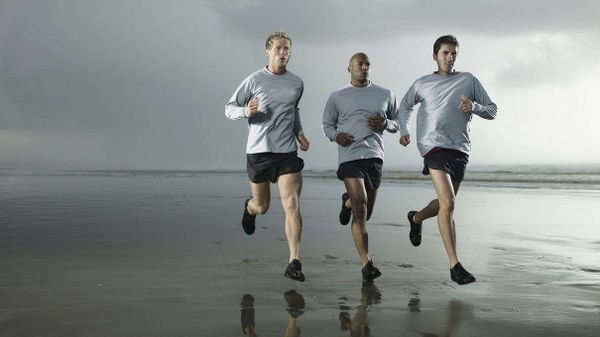
Most people hit the pavement in search of mind-clearing, health-improving exercise, but could an ill-fitting jog bra be getting in the way of success? It might — if it's too tight.
By their very nature and function, jog or sports bras are supposed to be snug to adequately support the breasts. "However, this can theoretically be detrimental if it constricts to the point of not allowing the chest cavity to expand during breathing," explains Dr. Miho Jean Tanaka, director of the women's sports medicine program at Johns Hopkins University in an email interview.
Advertisement
Fortunately, a jogger would have to really bind "the girls" to cause major trouble. "As most sports bras are designed with elastic bands, it would be unusual for this to actually impair breathing to the point of being dangerous, but could lead to discomfort," Tanaka adds.
Oxygen deprivation isn't something you want to mess around with. Tanaka notes that the brain and muscles rely on breathing oxygen during any type of exercise, but runners in particular should be mindful of bra fit. "Particularly during endurance type activities, our bodies have an even greater demand and [are] more reliant on our breathing to support this," she says, noting that anything that prevents or eliminates deep breaths could cause shortness of breath or even lightheadedness.
The bra sizing system can be confusing, but it's worth the effort to find the appropriate fit. Research by the University of Portsmouth found that a well-fitting, encapsulated jog bra reduced breast movement and related pain by as much as 73 percent, compared with "bare-breasted running." Encapsulated just means that the bra supports each breast separately in an individual cup. A 2014 study published in the Journal of Sports Sciences found that 75 percent of the 1,285 participants experienced sports bra fit problems, most often shoulder straps "digging in" and chaffing, both of which are likely to be caused by a too-small fit.
Athletic/outdoor wear retailer REI recommends runners select a high support/impact design, adding that two fingers, but no more, should be able to fit between the bra's band and the body. To minimize the potential for breathing issues, Tanaka suggests trying prospective jog bras on and testing the fit out via a short period of activity and/or taking deep breaths at rest. "In general, the lower band around the ribs should be snug but not uncomfortable, while the material around the chest may feel tighter to provide adequate support," she explains, adding, "However, there should be no feeling of restricted breathing at rest."
Advertisement


